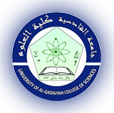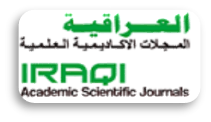Document Type
Article
Abstract
The current study aimed to test the blue-green alga Wollea salina on growth in culture media containing different concentrations of magnesium nanoparticles in addition to the control group (free of nanomaterials) in order to find out the effect of those minutes on the algae's physiology by studying their effect on the growth rate and chlorophyll-a Carotenoids, proteins, carbohydrates and fats. The alga under study was classified according to microscopy and based on some taxonomic keys after it was isolated, purified, and then grown in culture medium (BG-11). Three cultures containing three different concentrations of nano-magnesium oxide solution (93.8, 187.5,281.3) mg/L were used to compare that with the growth in the culture medium (control) free of these substances, to be then produced with biomass. For the purpose of ascertaining and knowing the size of the nanoparticles at the nanoscale, the nanocomposites of magnesium oxide were examined by atomic force microscopy (AFM). The height of the molecular assemblies of the magnesium nanoparticles was determined, and the height of the molecular assemblies was 466 nm, with an average particle size of 35 nm. The algae were also photographed with a Scanning Electron Microscopy (SEM) before and after treatment with magnesium nanoparticles, where the pictures showed the presence of morphological changes at the cellular level for these isolates. The growth rate was (0.388) for W. salina at a concentration of (187.5) mg/l of magnesium oxide (MgO NPS), while the results recorded the highest growth rate when the control treatment (without nanomaterials) was (0.507). Representative dyes were also studied, including chlorophyll-a, and the results showed that the highest value of chlorophyll-a at concentration (281.3) mg/l of MgO NPS was (1.068) µg/l. Also, it was noted that the highest value of carotenoid dye was recorded at a concentration of (281.3) mg/l of MgO NPS, which reached (0.992) µg /l. The highest value of protein (23.63) mg/L was recorded at a concentration of (281.3) mg/L of MgO NPS. As for the total carbohydrates, its content was (4.30) mg/L at concentration (281.3) mg/L compared to the control (4.37) mg/L. The results also recorded an increase in the algae's total fat content of( 0.058) g/l at the concentration (281.3) mg/l of MgO NPS compared to the control treatment, which recorded a total fat content of (0.048) g/l). The results of the statistical analysis showed that there were significant differences between the nanocomposites used in the study represented by magnesium in their effect on the physiology of the algae under study, and the control unit (without nanomaterials) at a significant level of p<0.05.
Keywords
magnesium nanoparticles, wollea salina, blue-green algae, growth, chlorophyll.
Recommended Citation
Alghanmi, Haider A. and Al-Khazali, Zahra K.M.
(2021)
"Effect Of Magnesium Oxide Nanoparticles On Growth And Biochemical Content Of Blue-green Alga Wollea Salina,"
Al-Qadisiyah Journal of Pure Science: Vol. 26
:
No.
4
, Article 14.
Available at:
https://doi.org/10.29350/qjps.2021.26.4.1396
Creative Commons License

This work is licensed under a Creative Commons Attribution-NonCommercial-No Derivative Works 4.0 International License.










